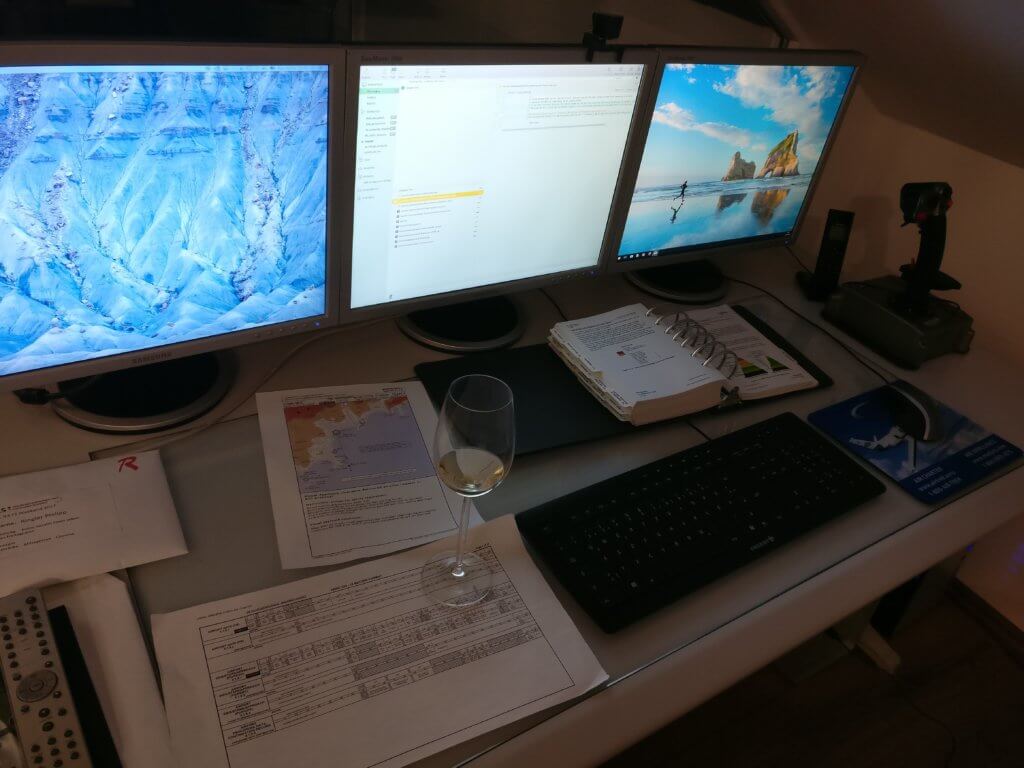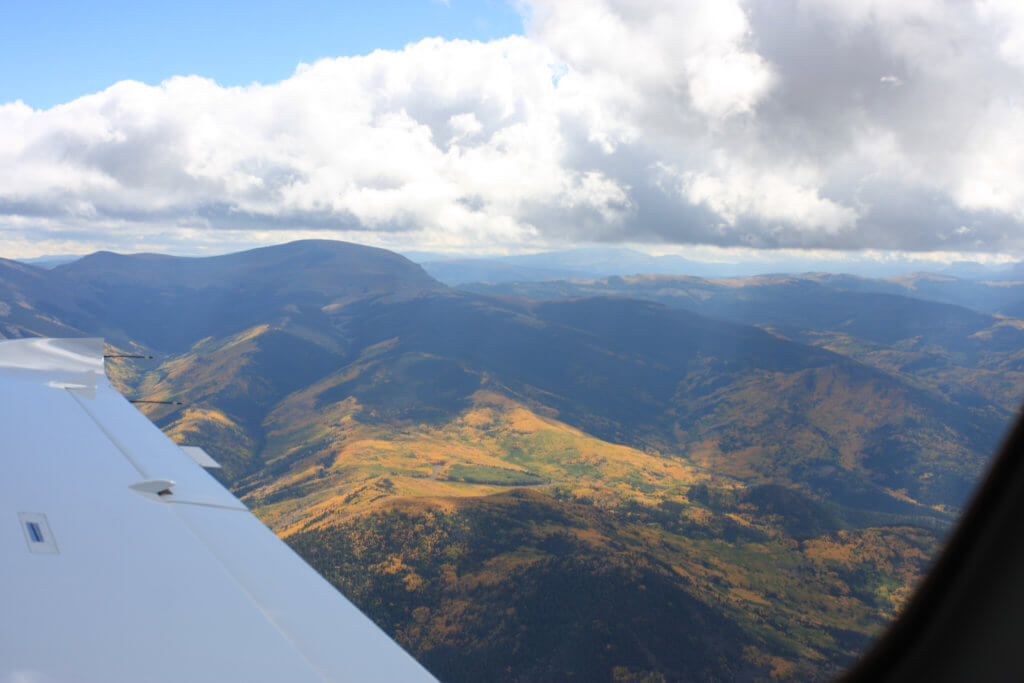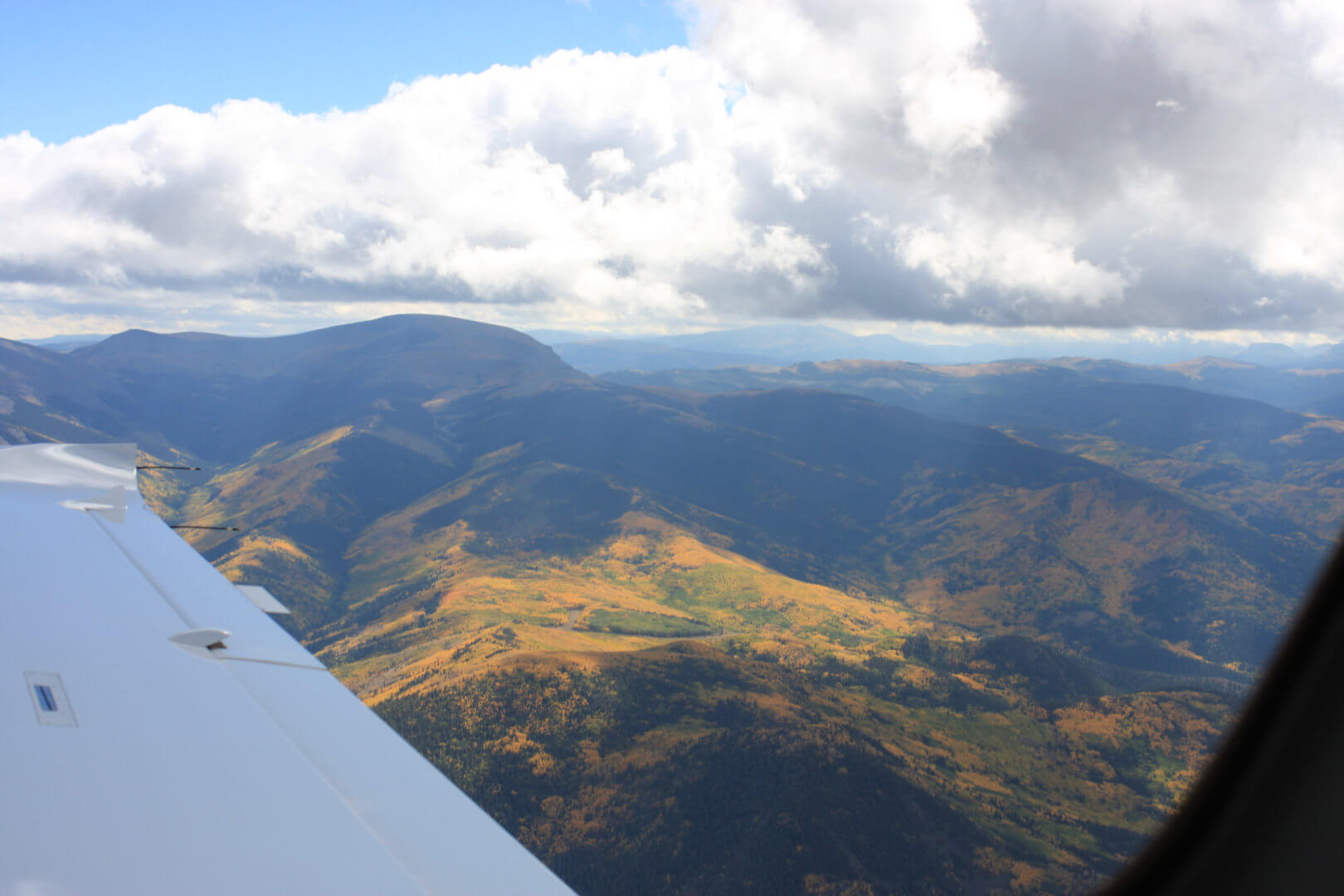Q: What’s your title with X-Plane?
Answer: Laminar Research doesn’t have an actual title policy, so depending on the time of day and who I’m talking to I’d be a software developer, analyst, avionics researcher or flight instructor. My main responsibility in X-Plane is avionics and navigational data, so everything that helps you to get where you’re going. To put it simply, I tinker with all parts of the aircraft that don’t have air flowing over or through them. Simulating flight physics is Austin’s department, but when you touch an instrument in the panel you are likely using some code that I had my hands on.
Q: Can you provide a little background on yourself?
A: I joined the X-Plane team in 2013 to bring the Garmin GNS navigators to X-Plane 10. My first programming experience was in Q-BASIC on Windows 3.11 back when I was in 5th grade. Mostly I wanted to have the computer do my math homework, because I’m still not good with mental math today. So that’s why I enlisted my computer, switched from BASIC to Turbo Pascal shortly thereafter, briefly tried C++ and then got stuck with scripting languages and web stuff for a couple of years until returning to C++ for good. My first foray into flight simulation was with the MS Flight Simulators 5.1 and 98, and my first encounter with X-Plane was with X-Plane 8. Up until 2008 I used FS and X-Plane interchangeably, but with the advent of X-Plane 9 I found myself using X-Plane exclusively, mostly because I’d gone from only using a simulator to creating content myself, and found X-Plane much easier and more straightforward to develop for. Back then I was part of a group of freeware developers who created the vasFMC that could be used with both FS and X-Plane aircraft. In 2011, I joined forces with Javier Rollon to create the CRJ-200 add-on aircraft, which was groundbreaking at the time and still holds a special place in my heart, because it’s such a special and quirky little jet. The next year Roman got me on board with FlightFactor where I worked on the 777 and later 757 aircraft. This was the last big aircraft project I was part of, then Ben enlisted me to work on X-Plane, where I have been responsible for avionics and a few smaller projects since. During my time at X-Plane, I also started my real world flying career, starting with my private pilot license in 2013, then instrument rating, multi-engine rating, commercial pilot license, flight instructor certificate, and finally instrument instructor rating in 2017. This year I’m looking at becoming a multi-engine instructor and I also want to get a seaplane rating, which I’ve wanted to do ever since I went to the seaplane base on Lake Winnebago at Oshkosh. These days I try to spend at least one day of the week away from the keyboard and out in the air instructing, to always keep the feedback loop between real world flying and X-Plane running.
Q: What was your first experience that got you into aviation or X-Plane?
A: My first successful landing was on an FS 4 running on an IBM PC clone, and it was at the Oakland scenery if I remember correctly. That must have been around 1994, and it got me hooked on flight simulation at a young age. My first time at the controls of a real aircraft was in an FK9 ultralight aircraft in 2002, and then in a Level-D Full Flight Simulator of a 757 in 2006, but I never pursued a real pilot’s license seriously until 2013.
Q: What type of computer set up do you use? Any hardware or accessories you couldn’t live without?
A: Most people would be shocked to hear that I do 90% of my work on a nine year old computer. I have a 2009 Apple MacPro “The Cheesegrater”, which I only recently retrofitted with two more powerful 6-core server processors and tons of RAM. It is by today’s standards ridiculously underpowered in the graphics department, but since I don’t develop scenery or rendering features, I rarely run X-Plane at anything but the lowest possible graphics settings. With twelve cores though, this machine churns through compiling X-Plane from the source code faster than anything else. On a typical day, I recompile and startup X-Plane probably 50 times, but only fly for a few minutes at a time. That’s why I still prefer running the quiet monster. I do have a typical “gaming” PC as well though, complete with VR-setup and lots of blue LED lighting. I don’t use it very much since it’s too loud so I can’t hear myself think when working.
For flight controls, I have a Russian VKB Cobra joystick, that I bought in 2012 and take with me to every public event or show where we have an X-Plane showcase. For the past 6 years, countless people have torn, punched and abused this joystick in every conceivable way and it still works flawlessly and looks almost pristine. It is absolutely the best joystick I’ve ever had.
My desk setup consists of three 4:3 screens, but the setup is also very focused on my work-flow rather than a traditional flightsim setup: The left screen is connected to my Mac, the right one to my PC, and the middle one switches between them, along with the other peripherals, by means of a digital KVM switch. This way I always have two screens on the machine I’m working on, and one screen to observe any tasks the other machine is crunching on in the meantime. The picture shows my desk less chaotic than usual, and because it was taken after hours, with a glass of Riesling that is necessary when reading the forums. Yes, I’m guilty of browsing X-Plane.org under the influence.

Q: Does this differ greatly when using X-Plane for work vs. fun?
A: For fun, I use my gaming PC, and I crank up the volume on the speakers. But then again the time I use X-Plane recreationally is probably only an hour a month or so. For winding down, I find train simulators endlessly fascinating, and I also enjoy the odd round of old DOS games, which thanks to DOSBox and archive.org have survived. I guess I simply spend too much time in real airplanes these days to fly virtual airplanes for fun.
Q: What’s the most exciting part of working on X-Plane for you?
A: The most fascinating is the instant transfer of experiences. Many times I flew a real airplane in the morning, and something happened that made me go “hmm, that is strange, I wonder how X-Plane handles this”. Then in the afternoon I’d work on getting X-Plane to do that exact thing. This is why new features keep cropping up in X-Plane whenever I get to fly a different new aircraft.
Then, I love to dig into manuals and documents like the FAA TERPS manual, which I read more often than a sane person should, simply because I want to know the “why”. The AIM teaches you the “what”, and this is what you learn when you become an instrument rated pilot, but reading the TERPS you get the “ahh, that’s why!” experience.
I do have a hard time finding the right level of understanding that a normal instrument student should be taught, and tend to upset DPEs with “well, actually …” rants. That’s why my Youtube channel should probably be called “more than you ever wanted to know about flying IFR”.
I’m also endlessly fascinated by reading real world airworthiness directives and manufacturer services bulletins when it comes to avionics. It is fascinating to see that often the very same problems arise in real world avionics that I deal with in X-Plane.
Q: Do you have a favorite aircraft to fly, or a favorite location?
A: My absolute favorite aircraft to fly was Austin’s Columbia. This plane handled so well, was so incredibly easy to land, and still powerful and fast. I flew it across the width of the entire United States twice, and loved every second of it. The Evolution he currently flies is much faster, but that’s its only feature. I only fly the Evolution with Austin with me, ready to take over if needed. Apart from Austin’s ridiculously fast aircraft, I enjoy flying Pipers. I prefer the handling of the Archers, Arrows and Comanches over their Cessna counterparts, which I find harder to land. I also think the Cirrus SR-22 is way overrated and don’t care for its feel very much.
The most beautiful flight I ever did was from the Grand Canyon, crossing Arizona to Durango, CO, and then flying over the Rocky Mountains via Pagosa Springs to Pueblo. It was in the fall and the colors were incredible! Looking back, flying a Columbia 400 over the Rockies was clearly the epitome of my flying career so far, and I can imagine few things that could surpass that.

In X-Plane, I absolutely love our new default C172. While I don’t care very much for flying the real thing, the model in X-Plane is just so great. The textures, the sounds, the way it feels, the carefully crafted model, the way this all comes together in VR is just perfect! This is the plane that when I put on VR glasses for the first time, gave me the greatest “Wow, I’m really here” experience.
Q: Do you have a favorite plug in or add on?
A: My X-Plane installation is very vanilla, I only have a few add-ons that I use to help with compatibility testing. So when it comes to using X-Plane, I’m usually just flying the C172 and the default scenery, and of all places I usually fly to the airports that I use regularly in real life as well. And here is the part I love about X-Plane: The airport sceneries! Every airport I’ve been to has a hand-crafted scenery nowadays. Even the Lexington County airport in South Carolina, which is the most insignificant little strip of asphalt you can imagine, had someone go “I can make an accurate scenery for that!”. It’s amazing how many people use World Editor these days. My overall favorite scenery is probably KCUB by MisterX, which is just spot-on, though I think it lacks models of Austin and me standing somewhere!
Q: What do you see for the future of flight sim development?
A: VR is here to stay. We are currently seeing only the first generation of headsets, and while they are not perfect, remember the first generation of smart phones (Nokia Communicator, anyone?) and see how far we’ve come. I’m not suggesting it will replace screen-and-joystick desktop simulators completely, but I think “VR or screen” will be just like “Joystick or Yoke” in near future, just another option that some people can’t live without while others could care less. That’s why supporting VR is now as important as supporting a joystick. I’m in awe of what Chris, Ben and Sidney have pulled off to make X-Plane an awesome VR experience, and to the haters I say “You get better fps for your screen from it, so stop complaining”. I’m also happy to see how X-Plane is now the platform of choice for so many third party developers who create amazing content. And though it sounds surprising, I’m happy for P3D, Aerofly, FSW, Infinite Flight and all others to be here as well – remember how boring the years before that were? The world of flight simulation used to be buzzing with contenders like Fly!, Flight Unlimited, ATP, AS2 and when they all died out, we had years were almost no progress was made and basically everyone was just using an outdated Microsoft product. I’m glad we are in the second golden age of flight simulation now, with so many competing platforms where we all push each other to keep on improving.
So in one sentence, the future I’m looking forward to is wireless headsets that allow you to walk around your aircraft without becoming tangled up in cables, and lots of great simulators to choose from that run in them.
Q: Anything else you’d like people to know?
A: Unlike Ben and Tyler, I measure my development time in amount of tea consumed, not coffee. I love myself a Second Flush Darjeeling, a Nepal TGFOP or the occasional Ceylon and on a good day with lots of code written I probably go through two liters of it. My wife likes to point out that I’ve become completely immune to caffeine. Youtube commentators also demand I should limit my tea intake during screencasts. Clearly, they have not considered the negative impact that this would have on my output!


